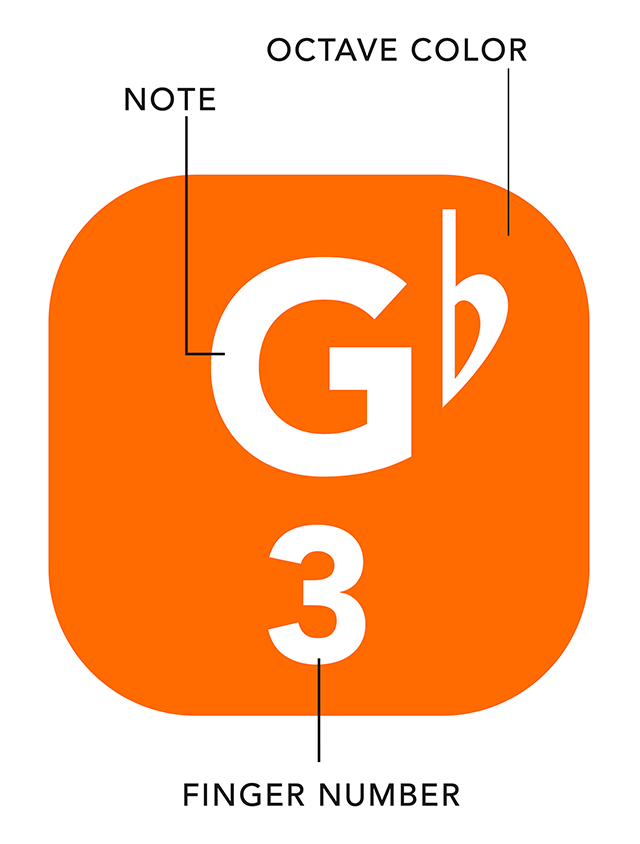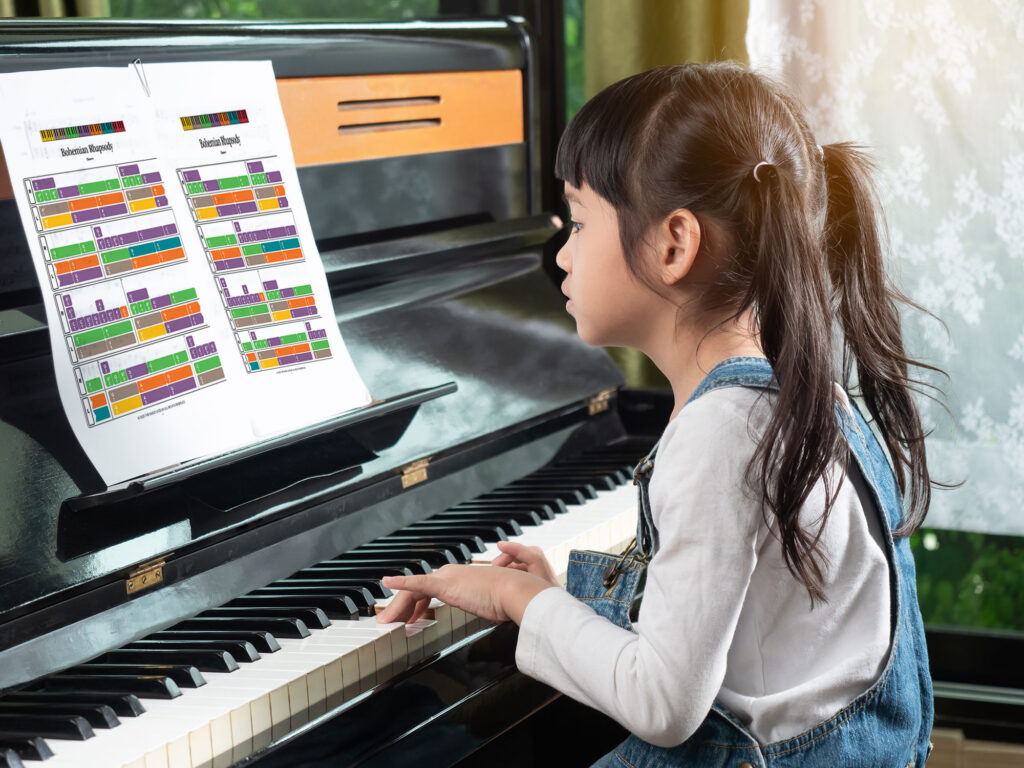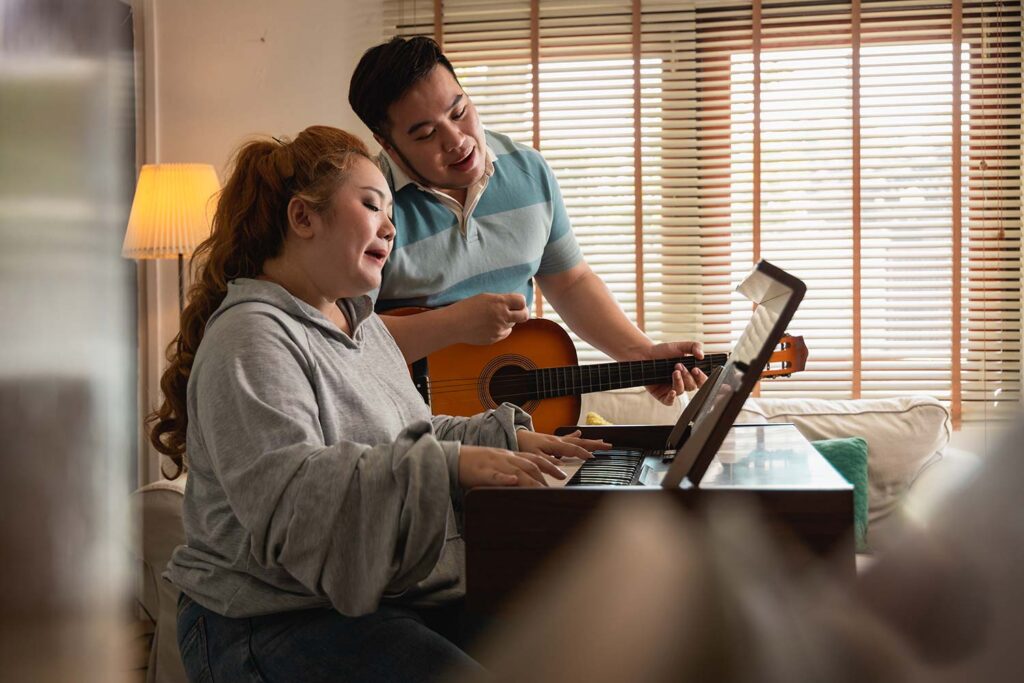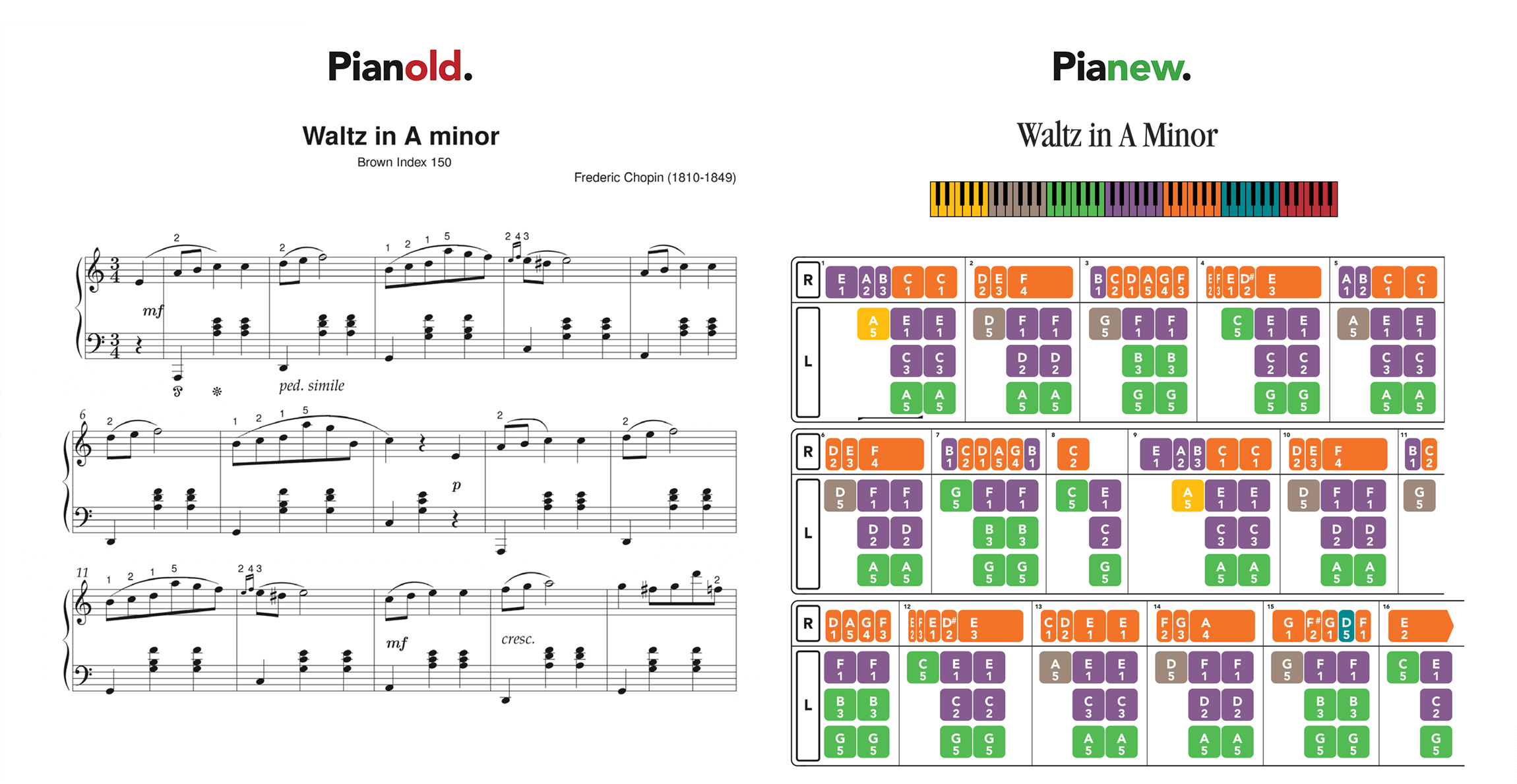A brand new, fun and easy way to play piano
Don’t learn to read music
Learn to play music
Piano players of all skill levels are attracted to the look and feel of Music Lyceum’s piano tab. Our simple system of notating music addresses each notes location on the keyboard, proper fingering, and timing. The piano keyboard is split into seven colored octaves. This makes it easy to find the location of each note of the song you are learning. Each piano tab ‘character’ tells you three things: which note to play, the location of the note on the keyboard, and which hand and finger to use. The characters are laid out in melodic phrases, similar to measures in standard music notation.
Instructions
Music Lyceum’s easy to read notation system guarantees a quick journey to great playing and musical understanding. Our piano tablature is the only existing alternative to traditional piano sheet music that you can print out and place on your piano. This allows you to be completely free of electronic devices. There is no need to continually manipulate a screen in order to learn. If you’ve been searching for how to learn piano by yourself, this is the easiest way. Should you have any questions, feel free to reach out to Sean Campbell, inventor of Music Lyceum’s piano tablature, and one of Santa Monica, California’s best piano teachers.
Contact Sean
Following the traditional path of music instruction, a student can spend years taking lessons in order to learn how to read traditional sheet music. In thirty minutes a student of Music Lyceum will learn all the basic skills they will need in order to become a great piano player, completely understand how to read our sheet music, and be able to play a beautiful Beethoven song.
Awaken your talent and creativity using a simplified approach to playing the piano that is immediately enjoyable and easy to understand. Music Lyceum’s piano tablature gives people of all ages and abilities the confidence to play their favorite music on the piano. This invention is truly changing lives and bringing joy to so many people. There are five-year-old kids using it, eighty-five-year-old senior citizens who thought they were too old to learn, and autistic and disabled students who are playing piano every day and have become completely independent when it comes to their music.


Following the traditional path, an aspiring pianist will spend years learning to read traditional sheet music in order to be able to play the songs that interest them. It is discouraging to only be able to play the songs that are at the level as your reading ability. Piano tabs are easy to grasp, so you can learn how to read music in only a couple of minutes. Through piano tab, people who have never before touched a piano are able to play beautiful music within thirty minutes. With Music Lyceum, look forward to rapidly ascending the learning curve and playing intricate music at a pace that was previously unimaginable.
Watch videosNew methods have been invented to quickly learn a new language. Music Lyceum does the same for piano. Our approach to learning piano is exponentially faster and far more enjoyable than traditional methods.
For many people traditional sheet music is the barrier that has prevented them from playing the piano. Millions of people have tried and failed to learn piano and the reason was not that they couldn’t play, it was that the experience of learning to read traditional sheet music was difficult and overwhelming. They didn’t fail at playing the piano, they simply lacked the desire to spend years learning how to read music. Instead of struggling to learn how to read music, focus your time and energy on learning to play piano. You’ll have fun building a repertoire of great songs from our ever-expanding tablature library and you’ll do it at a pace that was never before possible.

Tablature is a system of notation that clearly shows the player where to place their fingers upon the instrument. Through Music Lyceum’s piano tab you can learn to play the song of your choice using a color-coded system that clearly indicates which note to play, exactly where to play it, and with which hand and finger to play each note.
The illustration below on the left is an excerpt from Chopin’s Waltz in A minor as it appears in standard music notation. The illustration on the right is the same piece of music translated note for note into Music Lyceum’s piano tab. Unless you have in-depth knowledge of reading music, the standard notation is nearly impossible to understand. The piano tab however, clearly displays the exact same music in an easily understood format.
